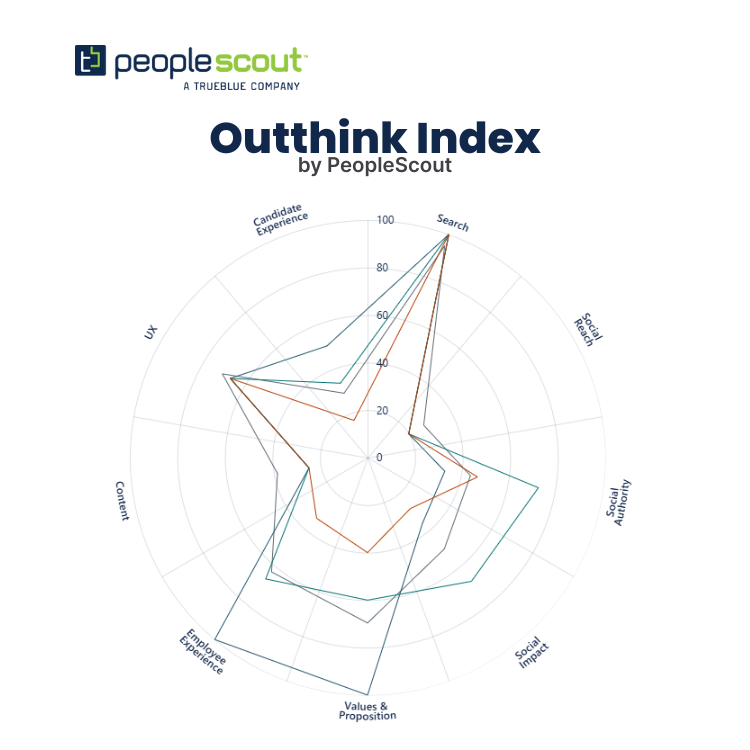
Interactive Tool
Introducing the Outthink Index by PeopleScout
How does your employer brand stack up against the competition?
Are you out front or falling behind, rising or declining?
The Outthink Index by PeopleScout is the definitive industry benchmark you need. Evaluate your performance now and fuel your future growth.
With one of the largest in-house talent advisory teams in the the business, PeopleScout delivers unmatched strategic expertise. We specialize in crafting and evaluating employer brands—assessing their effectiveness and helping them differentiate. The Outthink Index by PeopleScout represents a cutting-edge benchmark offering a clear picture of your employer brand’s performance.
We analyze your employer brand through essential candidate touchpoints, evaluating against crucial metrics from social media engagement to candidate experience and recruitment content.
You get a detailed rating you can benchmark against industry peers and market leaders. Make informed strategic choices, revolutionize your recruitment strategy and create a compelling employer brand that secures the talent essential to your organization’s future.




![Debunking Myths About Gen AI in Recruitment [Infographic]](https://www.peoplescout.com/wp-content/uploads/2025/05/AI-enable-applicant-report-320x320.jpg)





